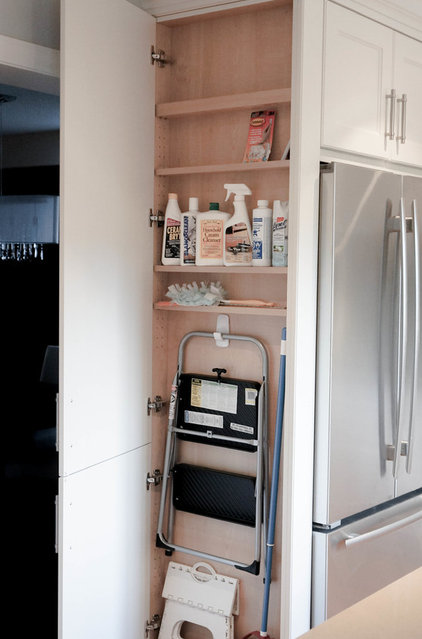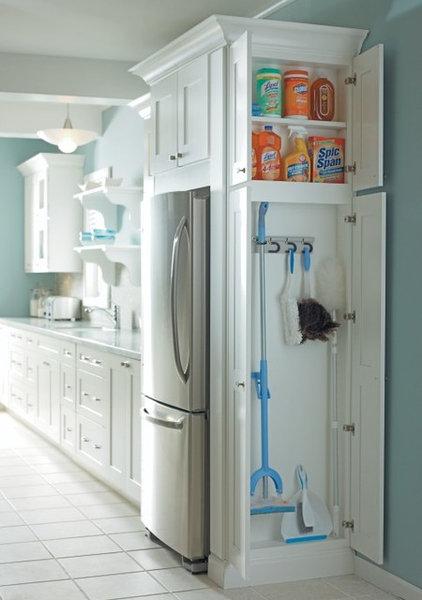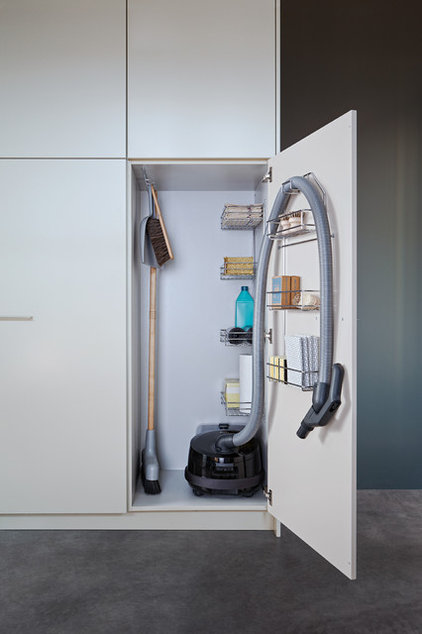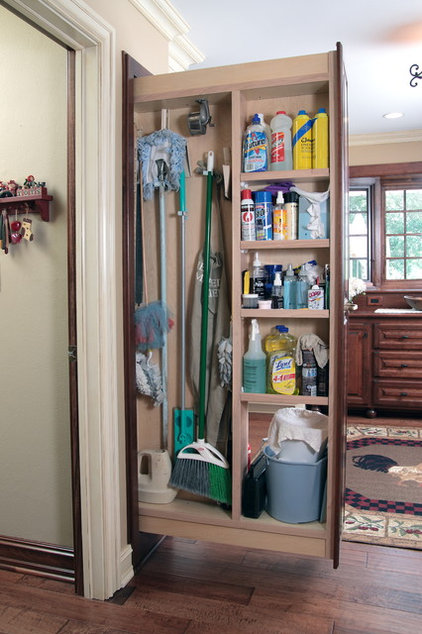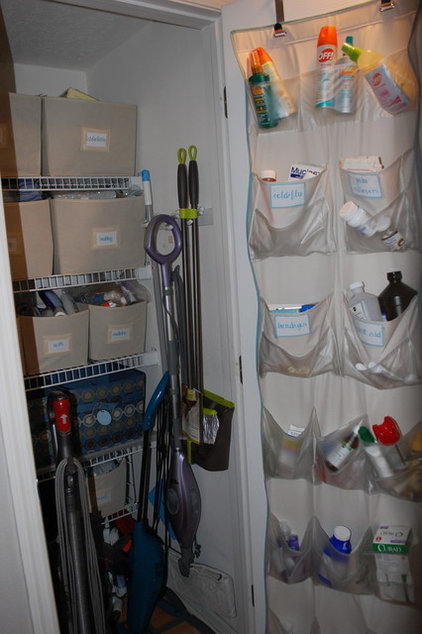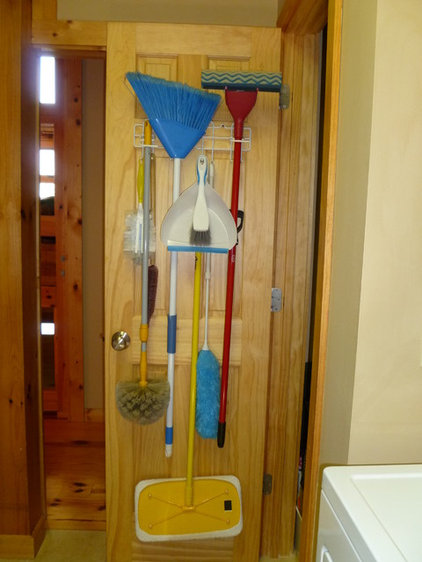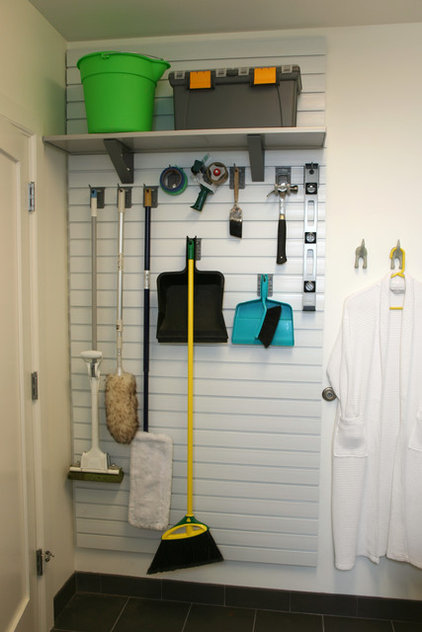Hardworking space: The broom closet.
The challenge: This compact space has a very specific purpose: storing the tools you need to get household jobs done. But with brooms, mops and unwieldy vacuum hoses tumbling out, and a jumble of cleaning products in the way, what should be quick and easy can be a real headache. These tips will help you choose the right spot for storing housekeeping necessities and organize them well.
Good to know: If you’re having trouble fitting all of your cleaning tools and supplies in the kitchen, consider spreading out. Put the big vacuum in another closet and store only the broom and dustpan or a slim stick vacuum in the kitchen cupboard.
Why: The appeal of a shallow cupboard for storing brooms and cleaning supplies is that everything can be easily reached, which means no tumbling bottles!
Planning tips: If you are planning a kitchen remodel, it’s ideal to figure out which cleaning tools and products you need to store beforedeciding on a broom cupboard. If the only tools that need storing are a broom and a basic mop, you may be able to do a broom cupboard as shallow as 6 inches deep. Even a very shallow cabinet can hold a broom, a stepladder and essential cleaning supplies, as shown here. If you have a stick vacuum or bulky mop, you may require 12 or 16 inches.
Layout tip: The area beside the refrigerator is a good place to look for a few extra inches of space for your slim broom cupboard.
Cost: Starting at around $100 (plus installation) for a no-frills Ikea model; $500 and up for finer finishes and better materials; more for a custom design. Be aware that most professional kitchen designers will do a piece like this only as part of a larger job — and estimating the cost of one component can be complicated.
Why: If you have the space, a tall cabinet with a partition in the center is a great way to store a lot while keeping everything in its place — vacuums and sweepers on one side, cleaning products on the other.
Extras: A tall, slim basket unit with pullout drawers is a good way to organize supplies. Install a few hooks in the cabinet or on the inside of the cabinet doors to hang a step stool, dusters and other tools. If you use a cordless stick vacuum, having an outlet installed inside the cabinet will make it easy to charge it between uses.
Cost: Around $550 to $1,500 for a tall cabinet with a single partition; more for a custom design. If you want to add an electrical outlet inside the cabinet, you may need a permit. Wall-mounted basket units and vacuum hose guides cost around $10 and up each; a basket unit with pullout drawers costs $100 and up.
Why: To take advantage of a narrow but deep space in your kitchen.
Hardworking details: A space accessible from both sides is handy for stowing a small garbage can or recycling bin. Choose adjustable shelving whenever possible, since this will allow you to get just the right shelf height for what you’re storing. And if you really don’t want to let an inch go to waste, use the inside top of the cabinet to install an old-fashioned pencil sharpener — look closely and you can see one here.
Cost: From around $250 plus installation for a basic ready-made pullout cabinet from Ikea; more for a solid wood or custom design.
How: Houzz user Kara Gilbert sent in this photo of her organized broom closet with a shoe rack on the back of the door — perfect when you need to make a closet work as hard as possible. The shoe rack holds first-aid supplies and toiletries in labeled pouches, while bins on open shelving provide ample storage. A small wall-mounted holder keeps cleaning tools out of the way, and a vacuum with a small footprint sits on the floor.
Why: If you have the luxury of more space for storing cleaning tools and supplies, make sure it’s put to good use by installing a versatile wall-mounted storage system that can handle anything from mops to hammers.
How: Choose from ready-made wall storage systems, like the one shown here, which can be customized with shelving, baskets and other features. Or craft a DIY version using basic pegboard from the hardware store and outfit it with hooks and baskets.
Cost: Wall storage systems can cost from $200 to $600 (and up), depending on size and features. You can install a pegboard for $100 or less, using materials from the hardware store and your own labor.
